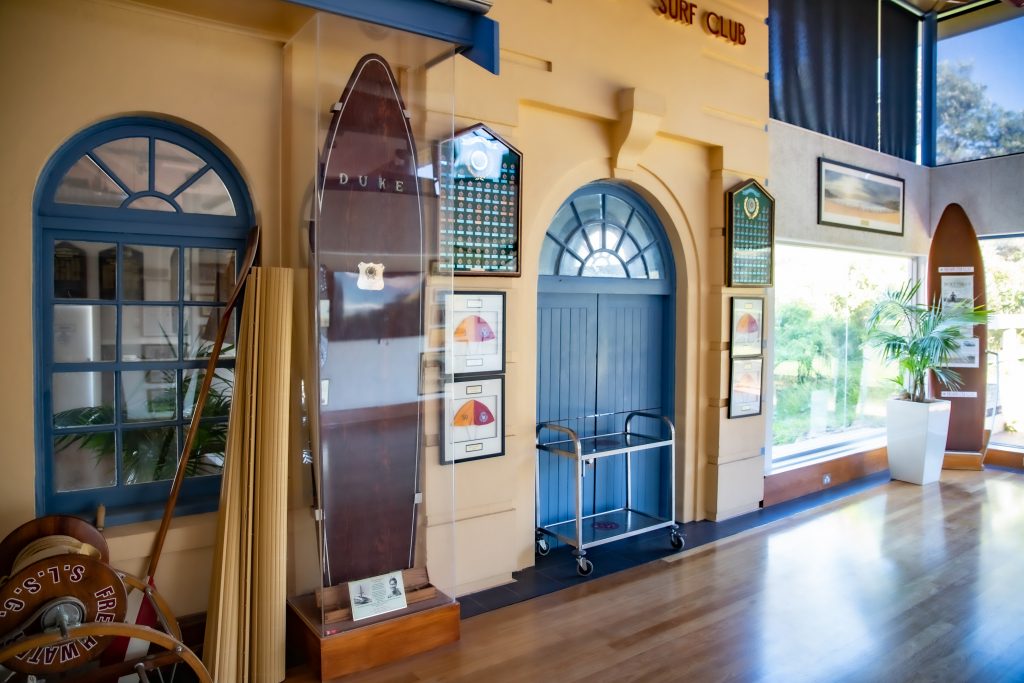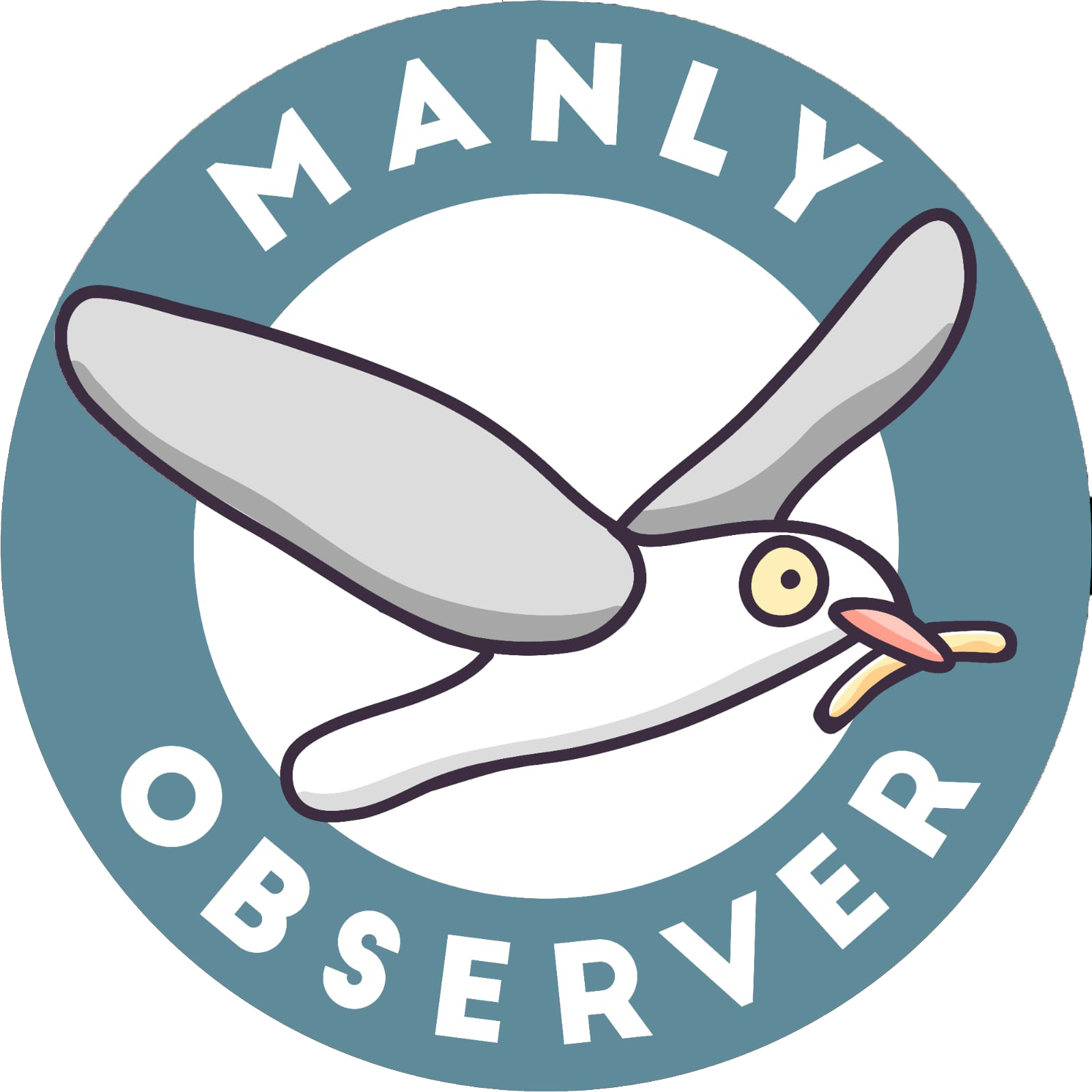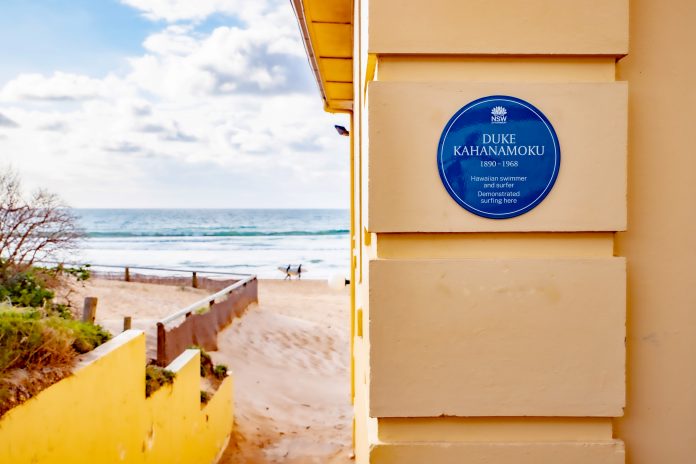A blue plaque was installed on the exterior of the Freshwater Surf Life Saving Club (SLSC) on 17 October to commemorate legendary Hawaiian surfer Duke Kahanamoku, who is forever associated with the historic beach.
The plaque, the first of an initial 21 across NSW, was unveiled by NSW Heritage Minister and Member for Manly, James Griffin MP.
On 18 April 2022 Mr Griffin announced that 17 influential people from varying backgrounds were selected to be commemorated on the first blue plaques, with more to follow, overseen by the Heritage Council of NSW.
This was in addition to an initial four plaques that were disclosed when the project was first announced in June 2021, a shortlist selected from over 750 nominations chosen by community organisations, local councils and the general public.

The plaques are derived from a similar scheme in Britain founded in 1866 by English Heritage to mark the homes and workplaces of influential Britons, including actors, authors, campaigners, scientists and sportspeople.
Kahanamoku was a record-breaking swimmer who won a gold medal for USA in the 100metres freestyle at the 1912 Olympic Games in Stockholm. However, he is credited with popularising the burgeoning sport of surfing in Australia during the summer of 1914-15 after giving a series of public demonstrations, the first two at Freshwater.
“Olympic gold medallist swimmer, Duke was invited to Sydney to perform swimming demonstrations and was persuaded to add surfing to his itinerary,” Mr Griffin said. “He dazzled onlookers at Freshwater Beach on Christmas Eve of 1914, using a hand-crafted board made of local sugar pine…”
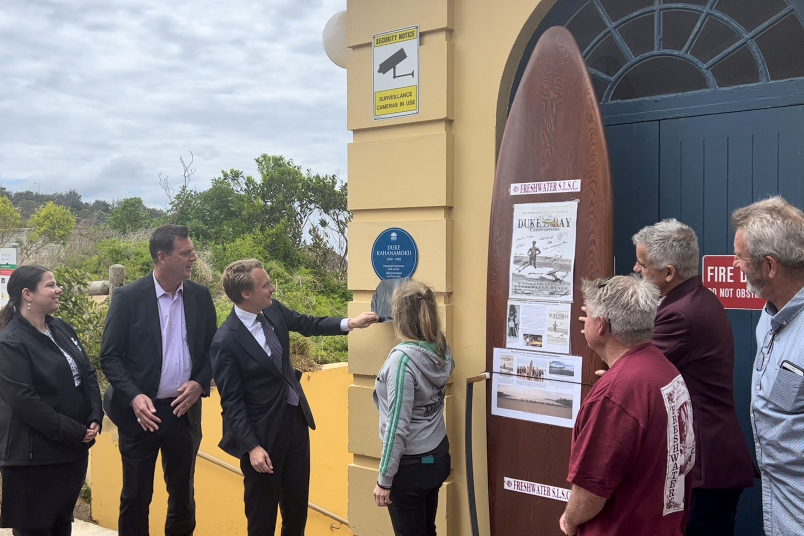
No ticket to ride
Kahanamoku, who arrived in Sydney on 14 December 1914 on an Australasian swimming tour, was contracted to give demonstrations in enclosed pools to a paying audience. His promoters initially tried to dissuade him from surfing, because spectators could marvel at his athletic prowess from the shoreline without purchasing a ticket.
Kahanamoku didn’t even have a surfboard at first, because he was under the impression they were banned in Australia. Keen to demonstrate his considerable wave riding skills, he commissioned George Hudson’s carpenters in Glebe to create a large ‘Malibu’ style board – typically 2.5 – 3 metres in length – made of sugar pine (Duke’s preferred redwood was unavailable).
Kahanamoku discovered there was a small group of enthusiasts on Sydney’s Northern Beaches who were enjoying the stand-up surfing Polynesian Hawaiians invented and called heʻe nalu, which translates as ‘wave sliding’.
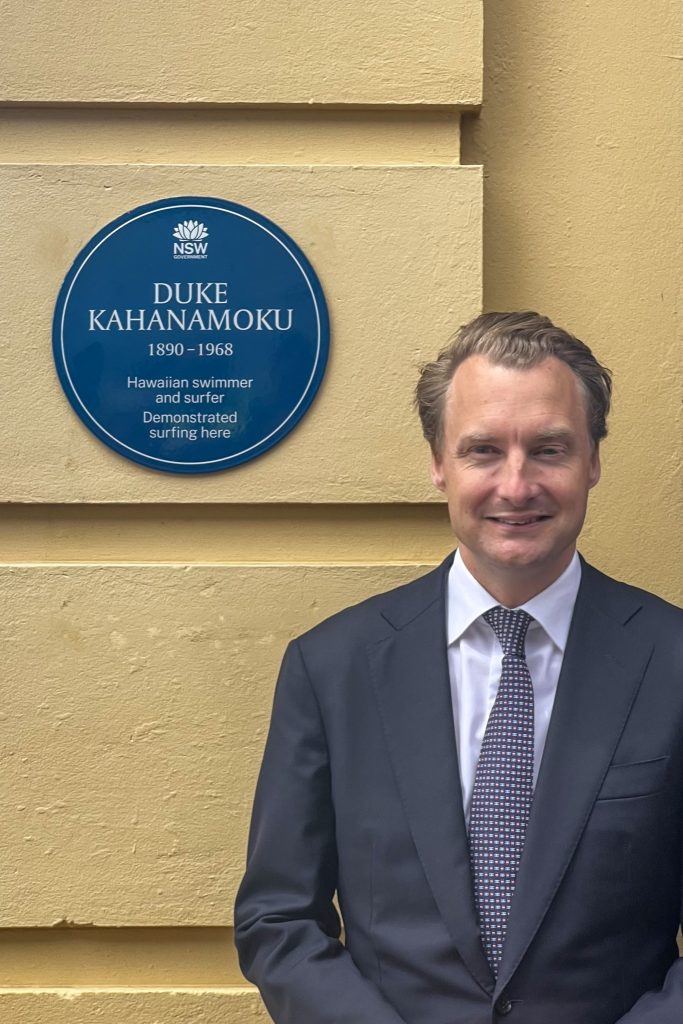
Kahanamoku most likely chose Freshwater to first demonstrate his wave-riding skills because almost three years earlier, on 26 January 1912, Manly local, Tommy Walker, gave a surfing demonstration at the second Freshwater Life Saving Carnival.
Walker used a genuine Malibu board he actually purchased in Hawaii, and the Telegraph newspaper reported his performance on the 300cm plank: “A clever exhibition of surf board shooting was given by Mr. Walker, of the Manly Seagulls Surf Club. With his Hawaiian surf board he drew much applause for his clever feats, coming in on the breaker standing balanced on his feet or his head.”

On Christmas Eve of 1914, Freshwater Beach was swamped by curious spectators who learned through a newspaper advert that Kahanamoku was to give a public demonstration of his surfing skills on his new 262cm-long sugar pine board (Duke was 186cm tall), which weighed a hefty 40kg.
Kahanamoku returned to Freshwater on 10 January 1915, when he was photographed by national media, entertaining a significantly larger crowd with his board techniques and tricks, including standing on his head.
Thereafter he gave public demonstrations at Dee Why and Cronulla beaches on 6 and 7 February, respectively, plus an unannounced display at Bondi Beach.
At Dee Why Beach, Kahanamoku showed off tandem surfing with a young local woman named Isabel Letham whom he plucked from the crowd. In a foreword he wrote for the 1963 edition of The Australian Surfrider, Duke recalled, “There was a tiny little girl in the crowd that day who by her manner seemed more excited than all in the crowd. I put her up on my shoulders and we made a few good rides.”
A first edition of the book signed by Duke Kahanamoku is retailing online for $ 5,644.92

Spirit of surfing encapsulated
“I can’t think of anyone who better encapsulates the spirit of surfing than Duke Kahanamoku – an adventurer and a sportsperson of supreme talent, he spent his life sharing these gifts with people all around the world,” Mr Griffin said. “Duke is now credited with popularising surfing in Australia after performing surfing demonstrations more than 100 years ago, right here on Sydney’s Northern Beaches in the summer of 1914/15.”
Freshwater SLSC historian, Eric Middledorp, liaised with NSW Heritage on the siting and wording of the blue plaque dedicated to Kahanamoku. “Duke’s original board is probably the most important piece of surfing memorabilia in Australia,” he declared.
Eric revealed to Manly Observer that when he joined Freshwater Surf Cub in 1964 he met older surfers who recalled watching those awe-inspiring demonstrations in the summer of 1914-15 that popularised the sport in Australia.
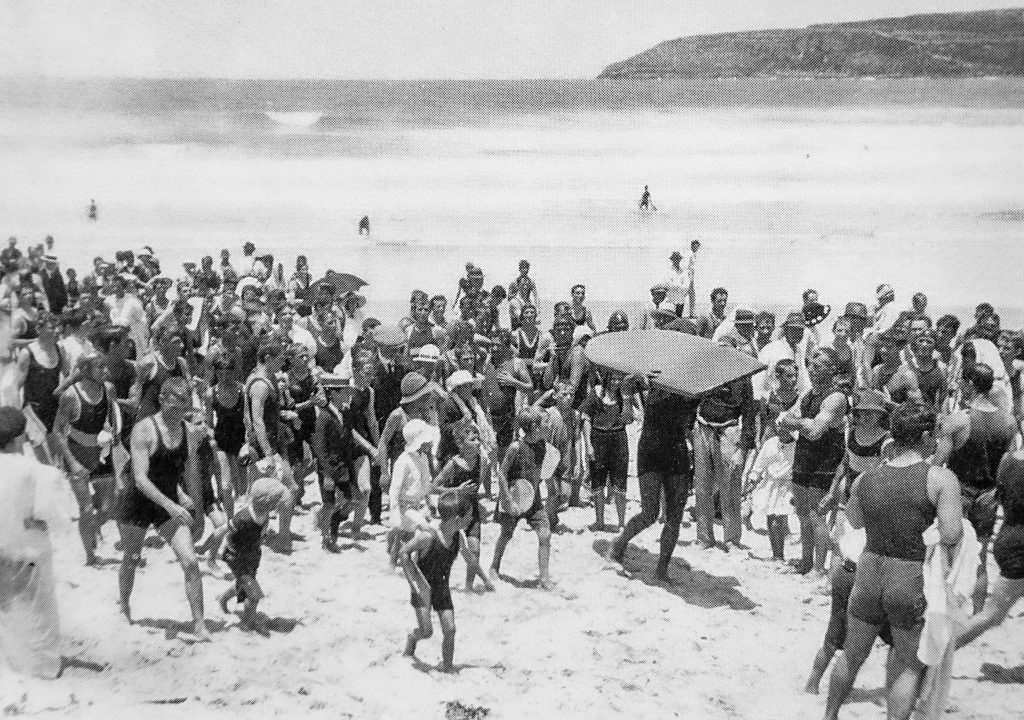
In 1924, the first Australian Board Riding Championship national competition was held at Manly Beach.
In 1964, the first ever World Surfing Championship was also held at Manly Beach attracting over 65,000 spectators. Midget Farrelly, local lad, was crowned the first Men’s World Surfing Champion.
Now Australia nurtures distinguished, world champion surfers, many of them originating on Sydney’s Northern Beaches, including Layne Beachley (Manly), Pam Burridge (Manly), Tom Carroll (Newport), Midget Farrelly (Manly), Damien Hardman (Warriewood), Phyllis O’Donnell (Freshwater) and Nat Young (Collaroy).
Duke Kahanamoku’s original Glebe-made sugar pine board, on which he demonstrated ‘wave sliding’ in Australia over a century ago, is on display inside a clear case in Freshwater Surf Life Saving Club.
Freshwater SLSC
https://www.freshwaterslsc.com/
Blue Plaques scheme
Further reading on Duke Kahanamoku
https://manlyobserver.com.au/duke-plaque/
Duke Kahanamoku’s blue plaque
https://blueplaques.nsw.gov.au/blue-plaques/locations/duke-kahanamoku
